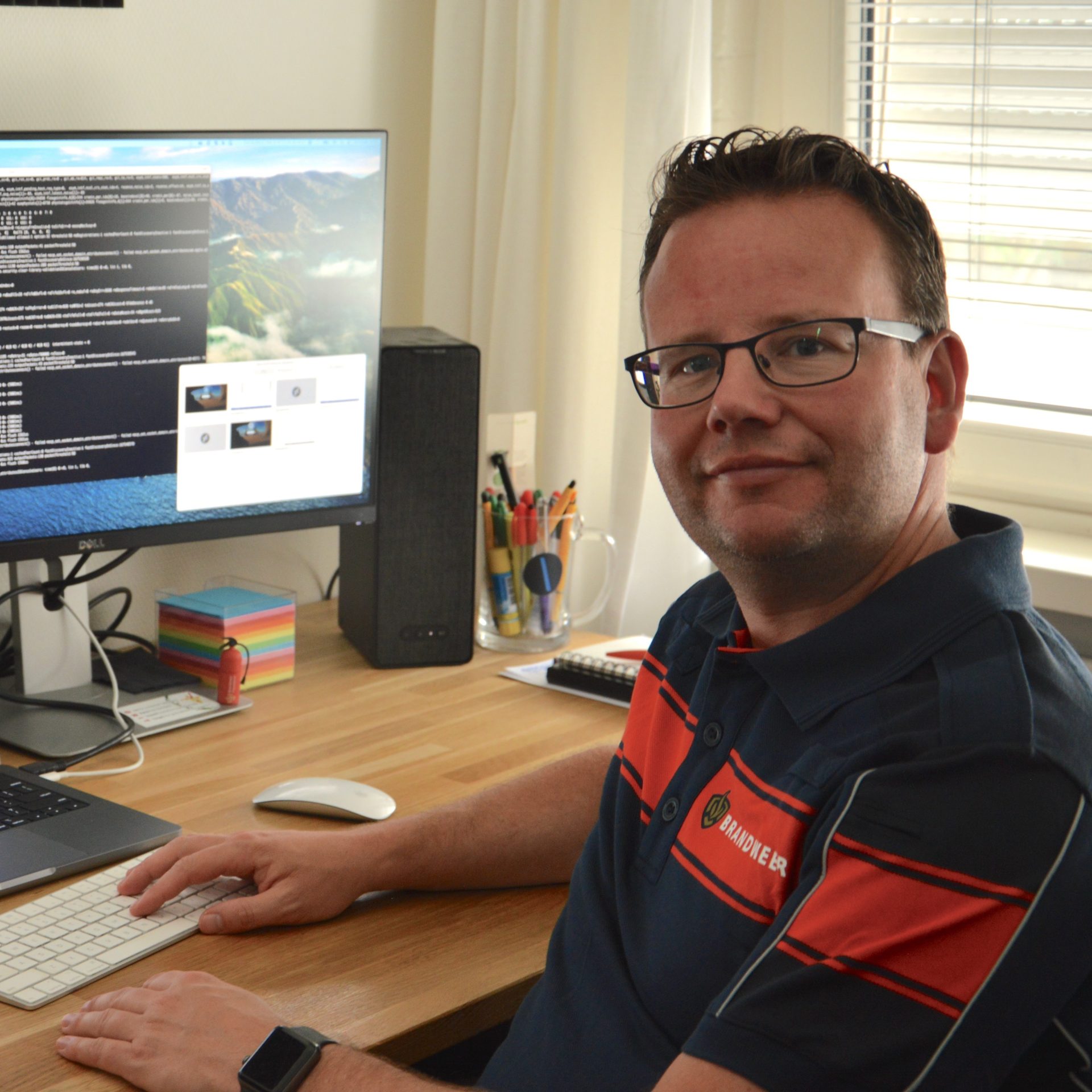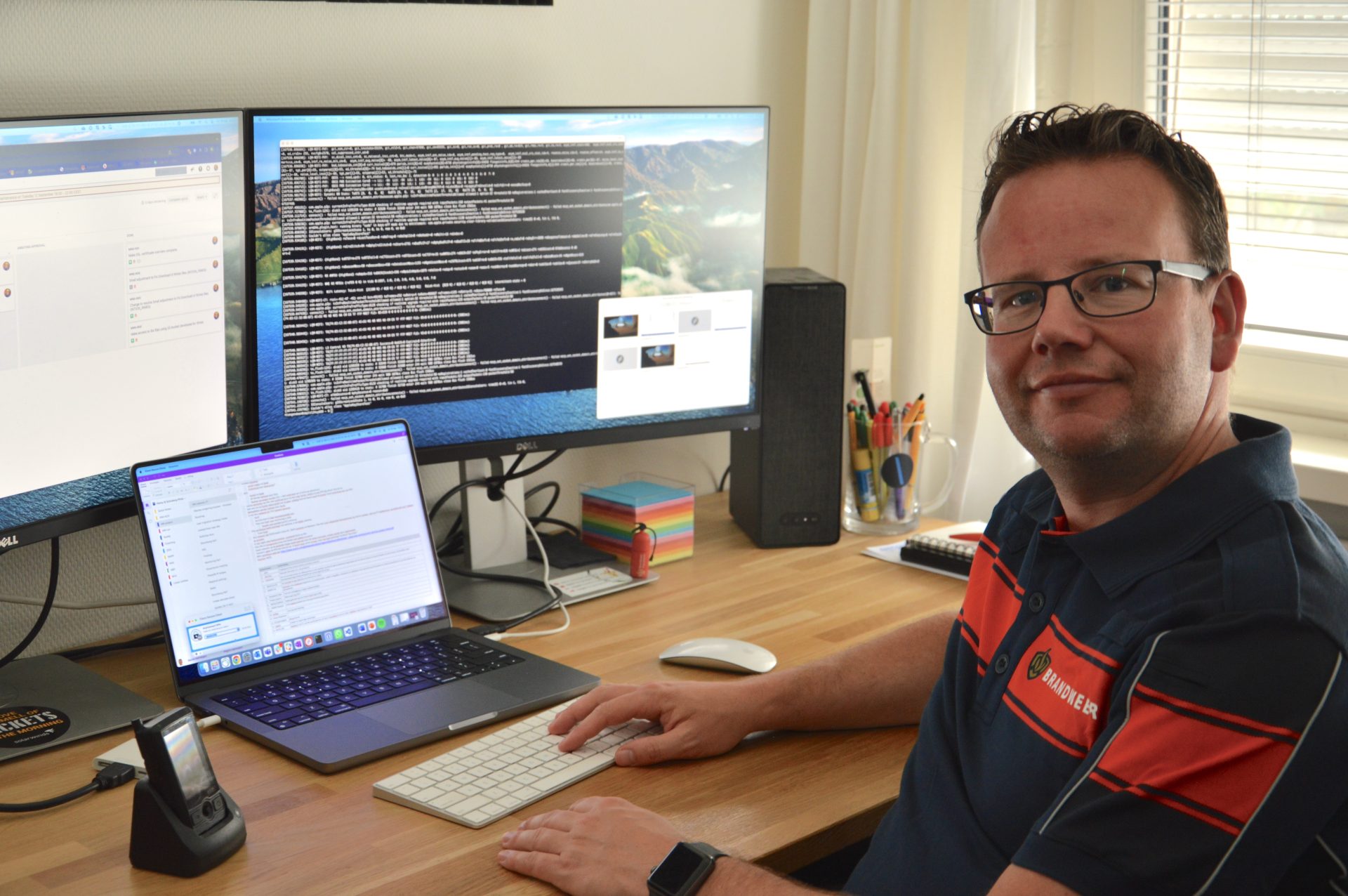Working life
How did you start at the company?
I started at Schuberg Philis in 2011. I was hired as a Linux/Unix engineer, but my background was with an internet service provider, so I have a lot of knowledge in other areas like networking, storage, project management, and even leading teams. In the course of 12 years, I’ve done several things. Like the other engineers here, I onboarded as a Mission Critical Engineer as part of a team, but whatever pops up in the team that needs to be done, if you like it, you pick it up. In the beginning, I was doing a lot of technical things like installing new applications for the customer, picking up the support tickets, and solving technical problems. In my current role of Technology Lead, you have more interaction with the customer and with colleagues about architectural decisions or some overall choices to make as a team. The role is also largely about supporting the team: getting people together and getting the best out of the team. That’s what I really like about Schuberg Philis: you have a lot of colleagues you can ask for opinions or advice and, together, you will always find something that works. And that’s also the challenge here sometimes, having so many expert opinions. But in the end, putting all these puzzle pieces together most of the time creates a completely different picture and shows something that we didn’t always think about when we started discussing. That gives a lot of positive energy to everyone involved.
What’s a typical day like?
I support my current customer with new questions and new projects. I’m typically finding out what the customer needs and what the team needs to convert that to the best possible service. I’m also available to the other teams within our Greater Customer Team (GCT) for any architectural or technical question. Not only because I’m the Technology Lead of my current customer team but also because the Technology Leads of the customer teams align with each other to prevent having to reinvent the wheel each time. As we speak, other teams are refreshing the whole environment of their customer, moving them to our new Schuberg Philis private cloud, sbp.cloud, and using the same building blocks we used for my current customer. We built the solution for my customer in around a year, and now they are doing the same thing for their customer in just a couple of months. That means they can reuse a lot of what we made and our knowledge to speed up new developments. At the same time, they are improving it again for the next possible customer or the refresh of an existing customer. I’m really proud of that. Next to that, I’m also busy with the company emergency response (BHV). As head of the BHV team, I feel entirely responsible for the BHV, of course with the whole company emergency team supporting me. Duties include reviewing and, as necessary, revising procedures to protect our colleagues’ personal safety when in the office. This also involves providing regular trainings and exercises and making sure all the first aid equipment is available when needed.
Company culture
You have worked for several customer teams at Schuberg Philis. How has it been to move around within the company?
Different teams of the organization have different vibes; that’s also what I like about working here. If you are feeling a little bit done in a certain area, you can always find something new in the organization that fits your needs at that point in time. After almost 10 years of working in my last customer team, I was like: maybe it’s good to look around because trying something new is good for your development. My wish for some time was to start with a customer from scratch, to step into a new customer team, to see how it works in presales, how to get a customer on board, and what happens during that whole process of making an offer and organizing all kinds of workshops. I had already given my signal through the salespeople that if there were a new customer, to please ask me to join. And indeed, I was asked to join conversations in the first stage with who turned out to be my current customer. I enjoyed this very much, and it also was a big learning curve. I helped with organizing the first workshops to get the scope of the project clear, to see what their needs were and how we could help them, and together with the Customer Sales Director and the Customer Operations Manager to build an offer and present it to the customer. That’s why when I see some people leave the company for some reason, I think: Oh, did you look around well enough to find something that fits you? Because with so many customers, there’s always an opportunity to find your new place, where you can do what you like to do.
What continues to keep you here?
Really, the reason I keep on working at Schuberg Philis is, number one, the people – actually. I really like my colleagues and to have people around me who think in the same way. These are colleagues you can really count on, have good discussions with, and rely on to help you forward. In the previous company I worked at, I was the one being asked all the time about everything and I had nobody to turn to. Here, there are always people challenging you. That really helps me in terms of things I want to get clear for myself. Sometimes you have an idea, but other people have other ideas and that helps shape something in a different way. For me, the people around really feel like a family as well. Number two is having the freedom of working where you want to – from home, the office, or the customer. It’s just really pragmatic, answering the question: so what do you need? Together with your team, you decide how you want to work; together you figure something out that works for you. That flexibility is something I appreciate, and I see how this is not an organization where rules come first; the people come first and the rules support the people.
Passion project
What do you do in your free time?
I’m a volunteer fireman, so I also practice safety a lot in my own time. I lead one part of our firefighting team, so I also have some responsibilities there. I like to do sports to keep my body and mind healthy.
Is there a similar mindset guiding your volunteerism and your work?
Where I come from is helping people. For me, firefighting is helping people. Working in a customer team with the customer is helping your customer, helping your team, getting the best out of your teamwork, looking out for each other, and having fun together as well. If you look at the type of people who work at Schuberg Philis, everybody is willing to help each other and to work together. That is a really important mindset to have. And when it comes to an emergency, like in the firefighting world, you see the same type of people: we really want to help each other, fixing the problem at hand.
Do you see other parallels in firefighting and mission critical engineering?
Yeah, a lot. For example, for both the firefighting team and the Schuberg Philis team, you should have the right amount of different people to create the ideal team. You need a certain balance of types. Some can handle stress and crisis situations; other people are less good at that but can follow procedures or execute what needs to be done according to somebody else’s lead. If you have the right balance in your team, that’s not a problem. You know from each other what your strengths and weaknesses are. So the more difference, the better, because for each situation, you need a different type of skillset. You can always put somebody in the lead at a certain point in time; and for another situation, somebody else can step to the front because it’s their area of expertise or comfort zone. However, there’s one big difference. That is the way we are organized at Schuberg Philis, where, by default, everybody is responsible within the team. In contrast, with firefighting, you have a really big hierarchy, so you know who is in charge, who is giving the commands, and who is executing them. At Schuberg Philis, everybody has what it takes to be a leader, but in critical situations you need to go back to a structure where you have somebody who makes decisions. You can still do it as a team, but there has to be somebody to take the lead and say: “This is what we’re going to do now. We can discuss other things later.” So at Schuberg Philis, if something is not urgent, then we let experts naturally take the lead, as we are used to regularly doing. But should some crisis happen, we know in advance who is doing what and we can trust each other to take care of it. For some situations, you just need firefighting mode.
Curious to know more about how more colleagues spend their days? See the whole series here.

